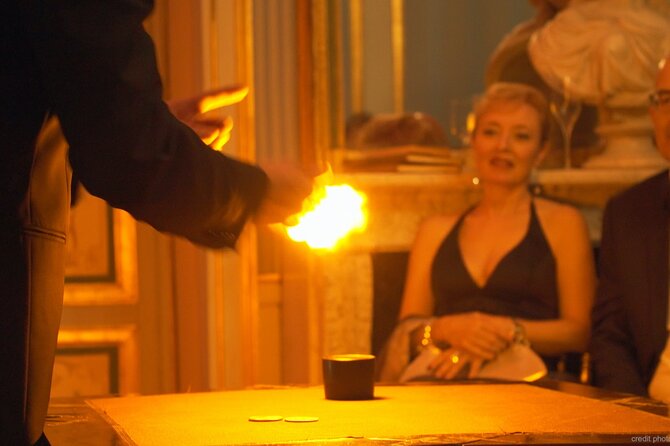The Galileo Museum in Florence is a must-visit for anyone interested in the history of science. By purchasing skip-the-line tickets, you can avoid lengthy queues and dive right into exploring the museum’s impressive collection. From Galileo’s iconic telescope to a wealth of other scientific instruments, the exhibits offer a captivating glimpse into the evolution of human knowledge. However, it’s crucial to be aware that these tickets are non-refundable, and entry times may vary. So, whether you’re a history buff or simply curious about the advancement of science, the Galileo Museum promises an immersive and efficient experience.
Key Points
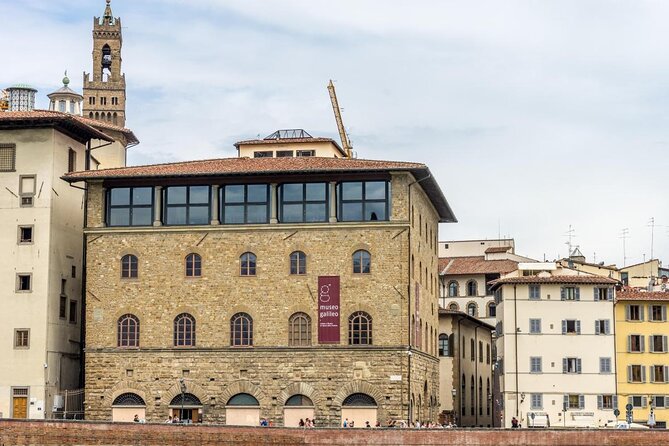
- Purchase tickets in advance on the museum’s website to skip the queues and gain direct entry.
- Assigned entry times may differ from requested slots, but tickets are non-refundable.
- The museum offers an immersive educational experience for science and history enthusiasts.
- Wheelchair access is available, and the museum follows strict health and safety protocols.
- The museum is conveniently located near public transportation options in central Florence.
Overview of the Museum
The Galileo Museum, formerly known as the Institute and Museum for the History of Science, is located in the heart of Florence, Italy and features a captivating collection of scientific instruments dating back to the 13th century.
Visitors can explore Galileo’s telescope, barometers, globes, microscopes, and even a giant sundial.
The museum appeals to both science and history enthusiasts, providing a unique glimpse into the past.
With its vast array of rare and fascinating artifacts, the Galileo Museum offers an immersive educational experience for anyone interested in the evolution of scientific discovery and innovation.
Ticketing and Admission Details
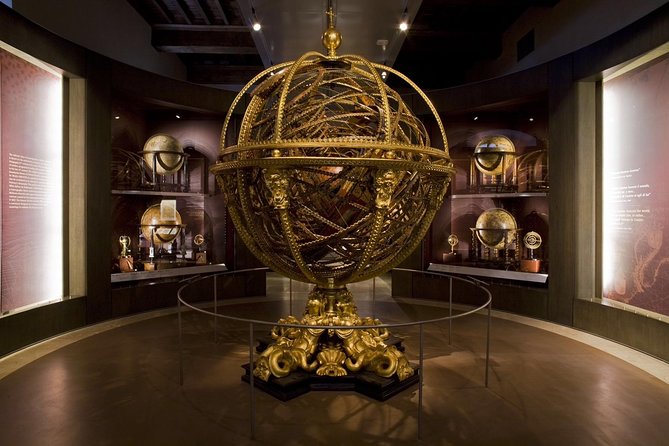
To secure a spot at the Galileo Museum, visitors can purchase tickets in advance on the museum’s website, thereby skipping the queues. However, the exact entrance time assigned may differ from the requested timeslot. Non-refundable tickets prohibit any cancellations.
With an overall rating of 3.5 from 49 reviews, the Galileo Museum offers a fascinating glimpse into the history of science. Visitors can explore a collection of scientific instruments dating back to the 13th century, including Galileo’s iconic telescope.
While the museum is wheelchair accessible, there’s a maximum of 15 travelers per tour, so advance planning is advised. Mandatory mask-wearing and temperature checks ensure a safe and enjoyable experience for all.
Accessibility and Transportation
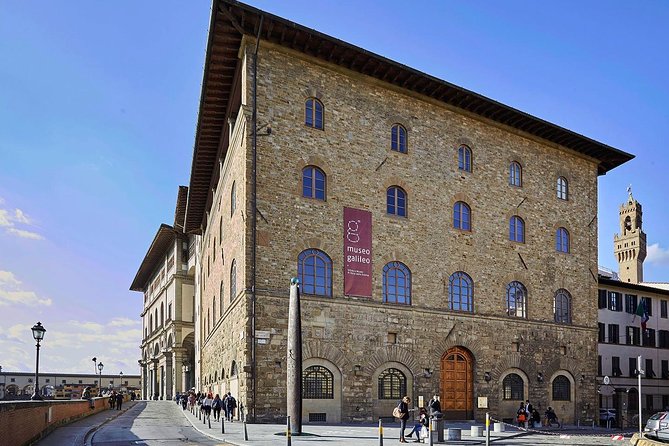
Wheelchair users can access the Galileo Museum via the entrance on Lungarno Anna Maria de’ Medici, which offers barrier-free access.
The museum’s convenient location near public transportation makes it easily accessible for visitors. Whether you’re arriving by bus, train, or taxi, the Galileo Museum is well-connected, allowing you to plan your trip with ease.
Keep in mind that the maximum group size for a tour is 15 travelers, and infants must sit on laps.
With these accessibility and transportation considerations in mind, you can confidently visit the Galileo Museum and explore its fascinating collection of scientific instruments and historical artifacts.
Health and Safety Precautions
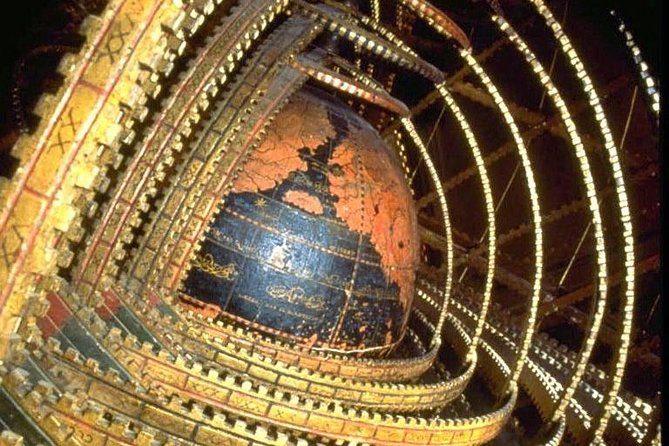
Amid the ongoing pandemic, the Galileo Museum has implemented robust health and safety measures to safeguard visitors. These include mandatory mask-wearing for both staff and guests, enforced social distancing through signage and hand sanitization stations, and daily cleaning of public areas. To further ensure visitor well-being, temperature checks are conducted at the entrance.
The Galileo Museum’s COVID-19 precautions include:
- Mandatory mask-wearing for all
- Enforced social distancing and hand sanitization
- Daily cleaning of public areas and temperature checks
These measures aim to provide a safe and enjoyable experience for science and history enthusiasts exploring the museum’s renowned collection of Galileo’s iconic instruments and artifacts.
Customer Feedback and Experiences
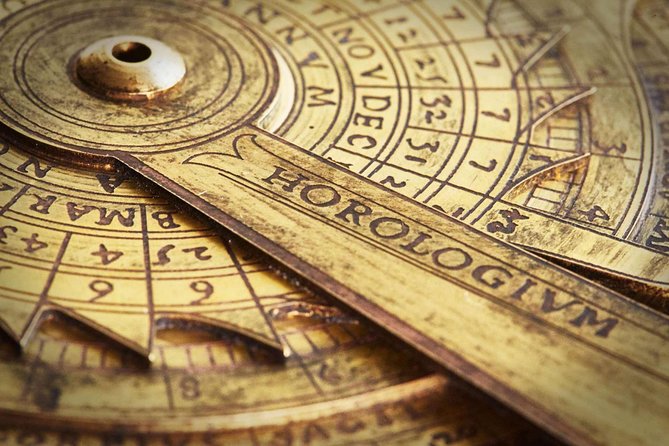
Visitors have offered a mix of feedback on their Galileo Museum experiences, with some praising the historical and scientific value while others expressing dissatisfaction with ticketing issues and perceived misrepresentations.
Many have commended the museum’s impressive collection of scientific instruments dating back to the 13th century, including Galileo’s iconic telescope.
However, several reviewers have complained about problems with their Viator tickets, such as not being accepted at the museum and a lack of communication from the ticket provider. Some also felt misled about ticket prices and availability.
Despite these concerns, the Galileo Museum remains a recommended destination for science enthusiasts seeking a glimpse into the museum’s rich history and Galileo’s groundbreaking contributions.
Getting to the Museum
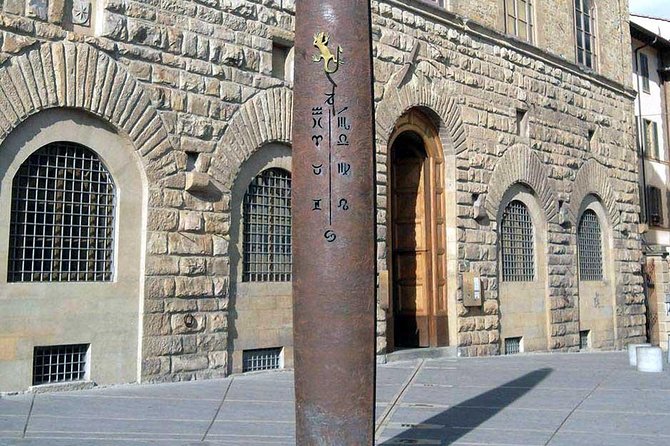
The Galileo Museum’s convenient location makes it easily accessible, situated near public transportation options in the heart of Florence, Italy.
Whether you’re exploring the city or planning a day of scientific discovery, getting to the museum couldn’t be simpler:
- By Train: The Santa Maria Novella train station is just a 15-minute walk from the museum, providing easy access from nearby cities and airports.
- By Bus: Several bus lines have stops within a short distance of the museum, including routes from the main bus terminal and throughout the city.
- On Foot: For visitors staying in central Florence, the museum is an easy walking distance from many popular attractions and accommodations.
Museum Highlights and Exhibits
The Galileo Museum boasts an impressive collection of scientific instruments and artifacts dating back to the 13th century, including Galileo’s renowned telescope, barometers, globes, and microscopes. Visitors can explore the museum’s vast array of exhibits, each offering a glimpse into the rich history of science and innovation. From the massive sundial to the intricate clockwork mechanisms, the Galileo Museum provides a captivating journey through the evolution of scientific thought and discovery.
| Exhibit | Description | Highlights |
|---|---|---|
| Galileo’s Telescope | Galileo’s original telescope used to make groundbreaking observations | Allows visitors to see the moon and planets up close |
| Scientific Instruments | Collection of barometers, globes, and microscopes from the Renaissance era | Showcases the advancement of scientific tools over time |
| Clockwork Mechanisms | Intricate mechanical devices used for timekeeping and astronomy | Demonstrates the ingenuity of early scientists and engineers |
| Sundial | Massive sundial that casts shadows to tell the time | Offers a unique perspective on the measurement of time |
Planning Your Visit
When planning a visit to the Galileo Museum, one should purchase tickets in advance to avoid long lines at the entrance.
With limited availability, securing tickets ahead of time ensures a seamless entry to explore the museum’s captivating exhibits at the scheduled time.
To make the most of your visit, consider the following tips:
- Book your tickets online to skip the wait and secure your desired entry time.
- Be aware that the assigned entry time may differ slightly from your requested slot, but you’ll still be able to access the museum.
- Keep in mind that tickets are non-refundable, so plan your schedule accordingly.
Frequently Asked Questions
Can I Take Photographs Inside the Museum?
Yes, visitors are generally allowed to take photographs inside the Galileo Museum. However, flash photography may be prohibited to protect the exhibits. Visitors should check for any specific photography guidelines upon arrival.
Are Guided Tours Available at the Galileo Museum?
Yes, the Galileo Museum offers guided tours. According to the museum’s information, visitors can choose an admission time that suits their schedule, though the exact entrance time may differ from the requested time.
Does the Museum Have a Gift Shop or Cafe on Site?
The Galileo Museum in Florence has both a gift shop and a cafe on-site. Visitors can browse science-themed souvenirs and refreshments after exploring the museum’s extensive collection of historical scientific instruments.
What Is the Ideal Time to Visit to Avoid Crowds?
The ideal time to visit the Galileo Museum is early in the day, around 9-10 AM, to avoid crowds. Weekdays are generally less crowded than weekends. Visitors should purchase tickets in advance to skip the lines.
Can I Store My Luggage at the Museum During My Visit?
The Galileo Museum does not offer luggage storage facilities for visitors. Travelers will need to make their own arrangements to store any bags or personal items prior to their museum visit.
Recap
The Galileo Museum offers a remarkable opportunity to explore the history of science.
Visitors can skip the lines and directly access the museum’s impressive collection, which includes Galileo’s renowned telescope.
With its immersive exhibits, the museum provides an engaging and educational experience for enthusiasts.
However, it’s essential to be mindful of the non-refundable ticket policy and varying entry times.
The Galileo Museum is a must-visit destination for anyone interested in the evolution of scientific progress.

